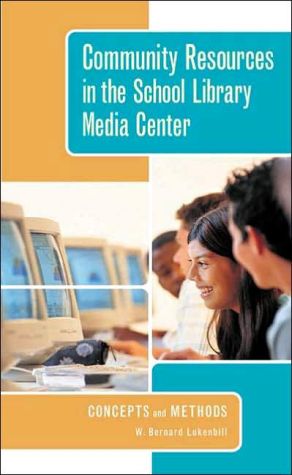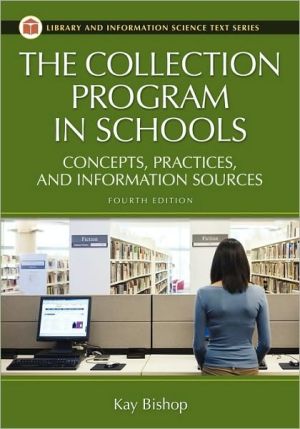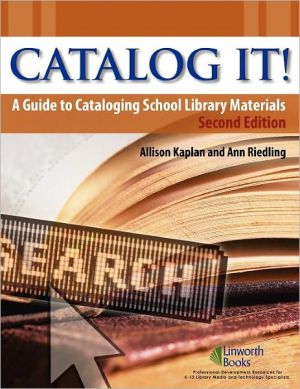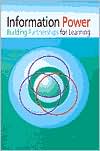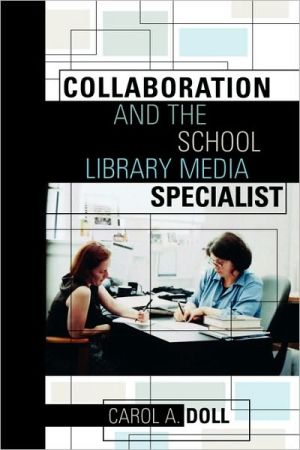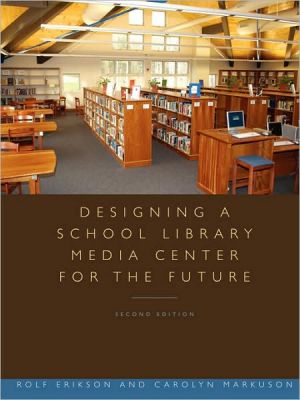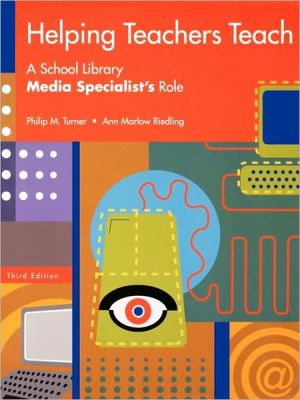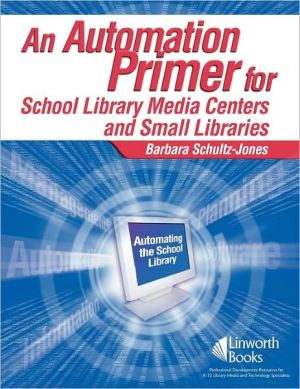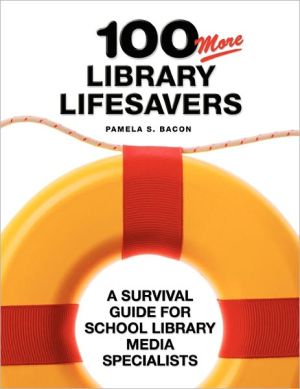Community Resources in the School Library Media Center: Concepts and Methods
This book provides an analysis and rationale for community information in the School Library Media Center. Arguing for the improved integration of community information into curriculum design, the book suggests that the topic can be used to promote the overall development of information literacy. It also considers community information and the preparation required to adequately teach community information. Important issues such as the kinds of materials necessary for community information...
Search in google:
Since the spread of the Internet, school media center specialists have a vast array of community information at hand in many formats, but education and school-based information services often don't know how to integrate such material into the school environment or how to use it effectively to increase learning. Lukenbill (information, U. of Texas at Austin) lays a foundation for understanding the role of community information in the media center. Models and guidelines provide school library media specialists with a roadmap to better use of community resources both as instructional and informational materials and as a means for promoting student learning in a variety of subject areas. Annotation ©2004 Book News, Inc., Portland, OR School Library Journal This text outlines organizational strategies for managing community resources. Recognizing the value of such collections usually maintained by the public library, the author suggests that easier access for students can make learning more relevant and "enable them to see a connection between the curriculum and the real world." Lukenbill includes information such as agency directories, telementoring numbers, historical documents, museum exhibits, photos, and volunteer pools. Expanding the concept of the vertical file, the author presents ideas for developing, managing, marketing, and accessing electronic photo archives, Web site links, school documents, and bulletin boards. One chapter addresses sensitive community information, censorship, privacy, and terrorism concerns. The textbook-style presentation is thorough, providing diagrams, charts, field research, and models, followed by a conclusion and extensive notes for each chapter. Sample subject headings, focus-group and field-study survey materials, and a community-information questionnaire are particularly helpful. A definitive tool for developing community-resource collections.-Vicki Reutter, Cazenovia High School, NY Copyright 2005 Reed Business Information.
Ch. 1Community and the school library media center1Ch. 2Curriculum and community resources13Ch. 3Selection and management23Ch. 4Networking : the heart of community information47Ch. 5Organizing the collection : technologies and approaches63Ch. 6Models and issues89Ch. 7Marketing the community information program127Ch. 8Challenges for the future143App. 1Examples of a local school subject headings authority list147App. 2Starter list of local city and area file subject headings151App. 3Focus group and field survey materials167App. 4Brake's community information questionnaire177
\ School Library JournalThis text outlines organizational strategies for managing community resources. Recognizing the value of such collections usually maintained by the public library, the author suggests that easier access for students can make learning more relevant and "enable them to see a connection between the curriculum and the real world." Lukenbill includes information such as agency directories, telementoring numbers, historical documents, museum exhibits, photos, and volunteer pools. Expanding the concept of the vertical file, the author presents ideas for developing, managing, marketing, and accessing electronic photo archives, Web site links, school documents, and bulletin boards. One chapter addresses sensitive community information, censorship, privacy, and terrorism concerns. The textbook-style presentation is thorough, providing diagrams, charts, field research, and models, followed by a conclusion and extensive notes for each chapter. Sample subject headings, focus-group and field-study survey materials, and a community-information questionnaire are particularly helpful. A definitive tool for developing community-resource collections.-Vicki Reutter, Cazenovia High School, NY Copyright 2005 Reed Business Information.\ \
